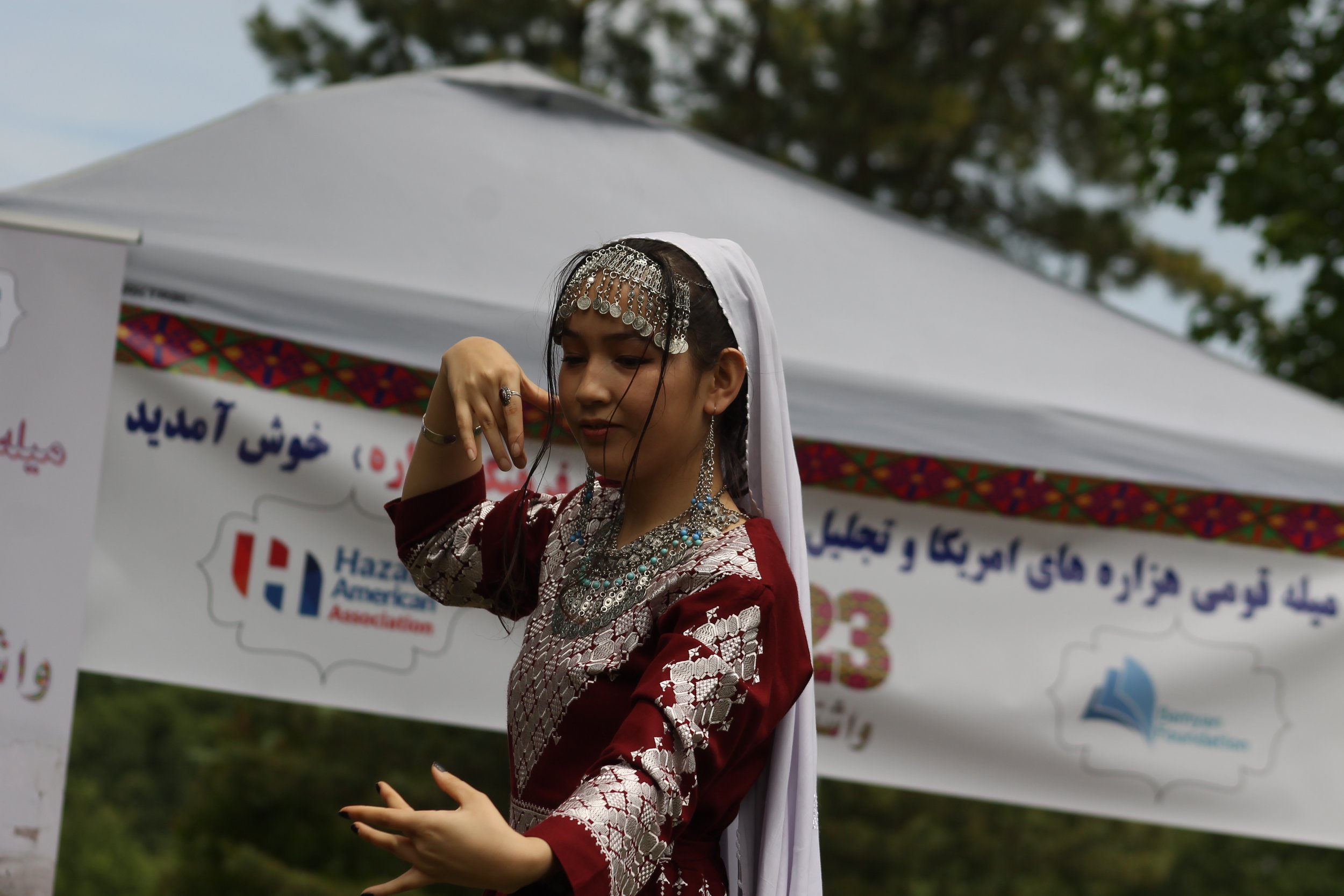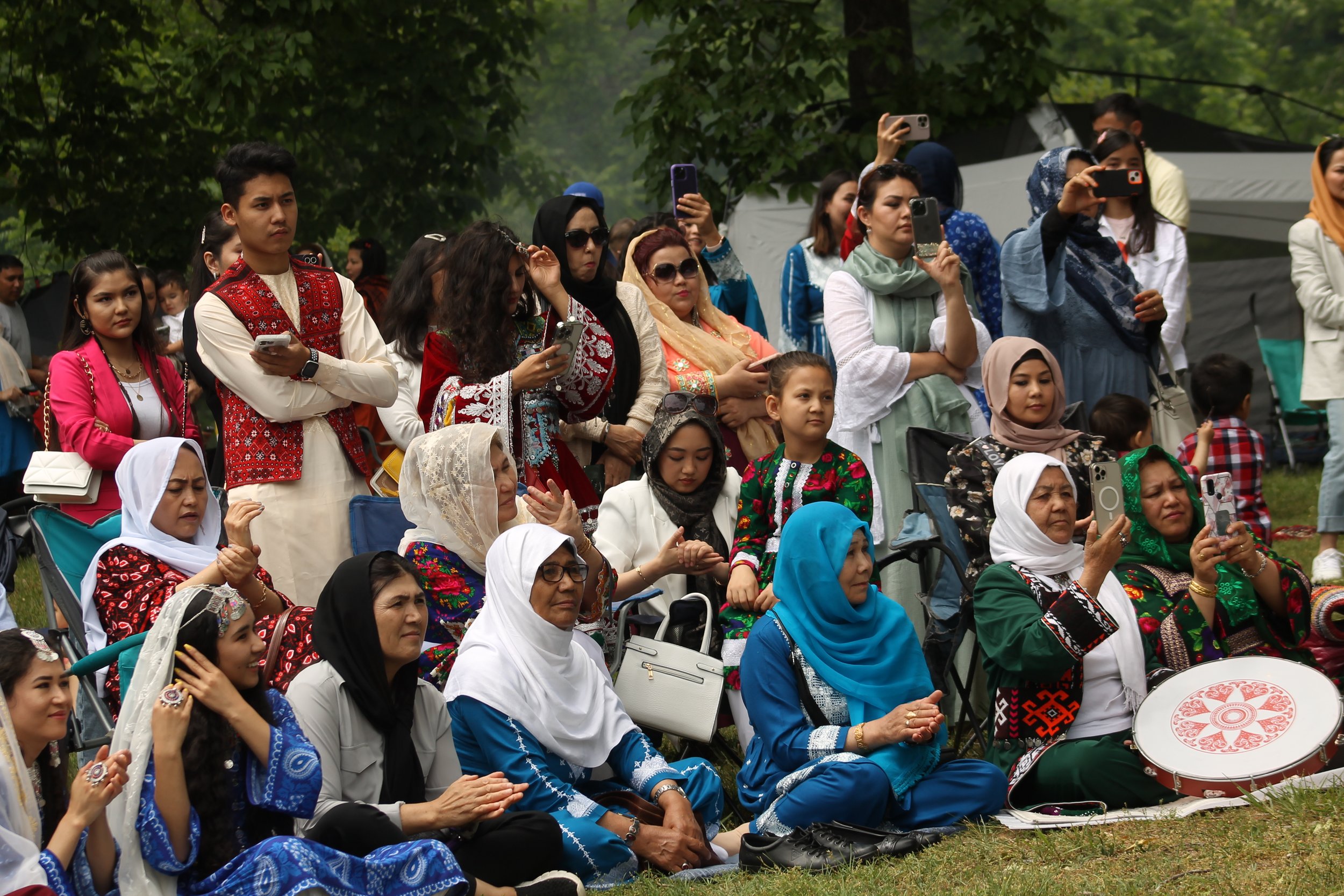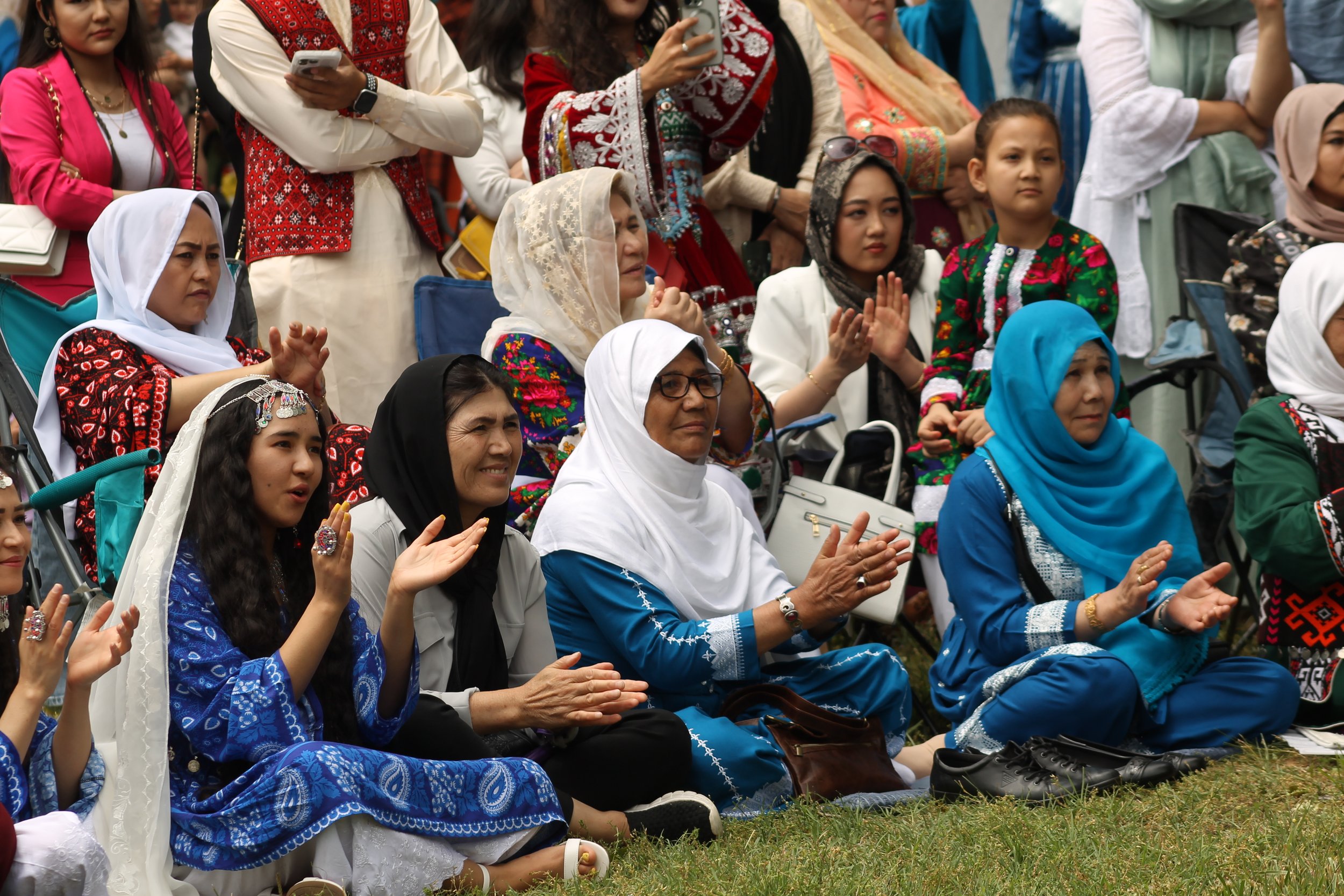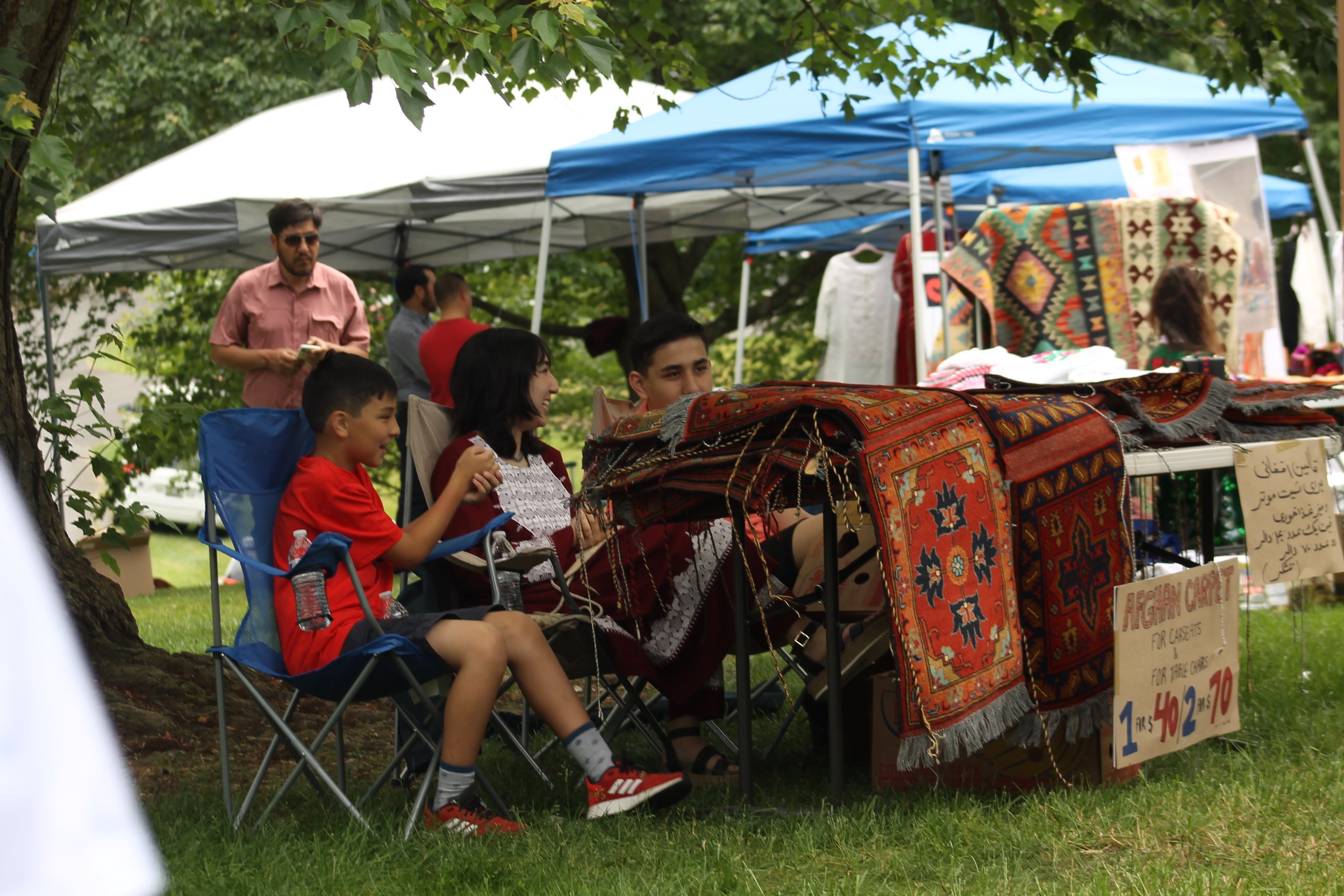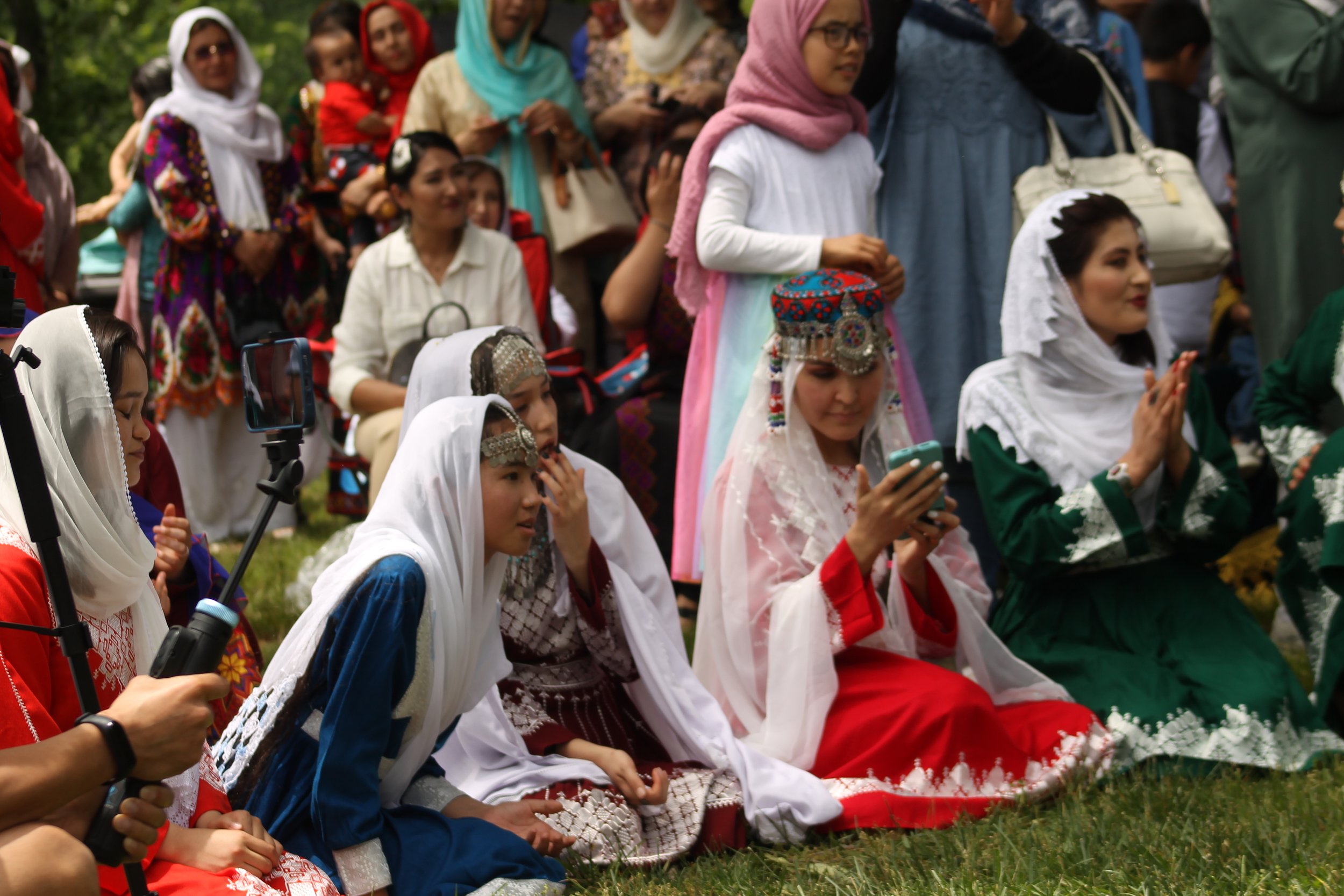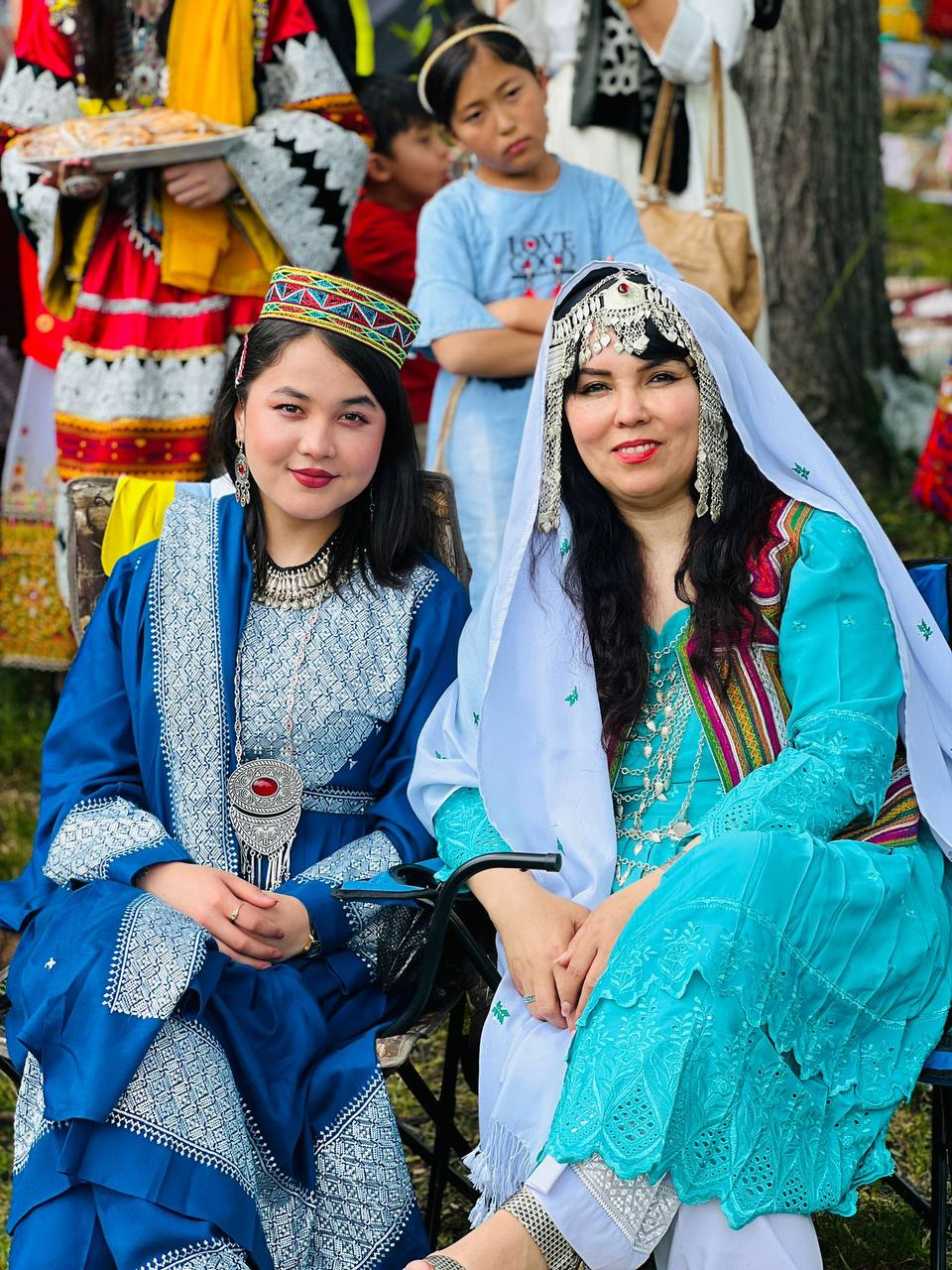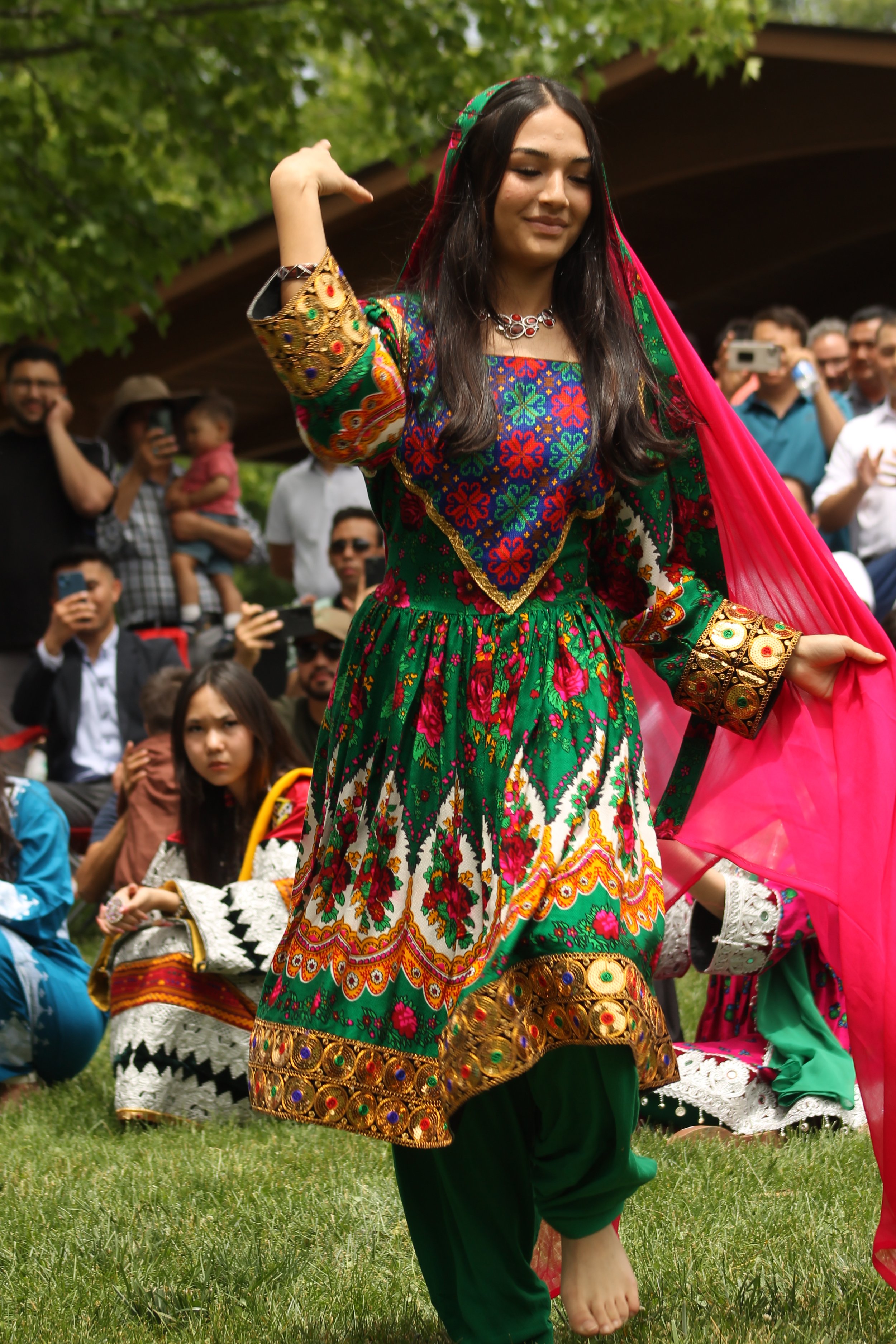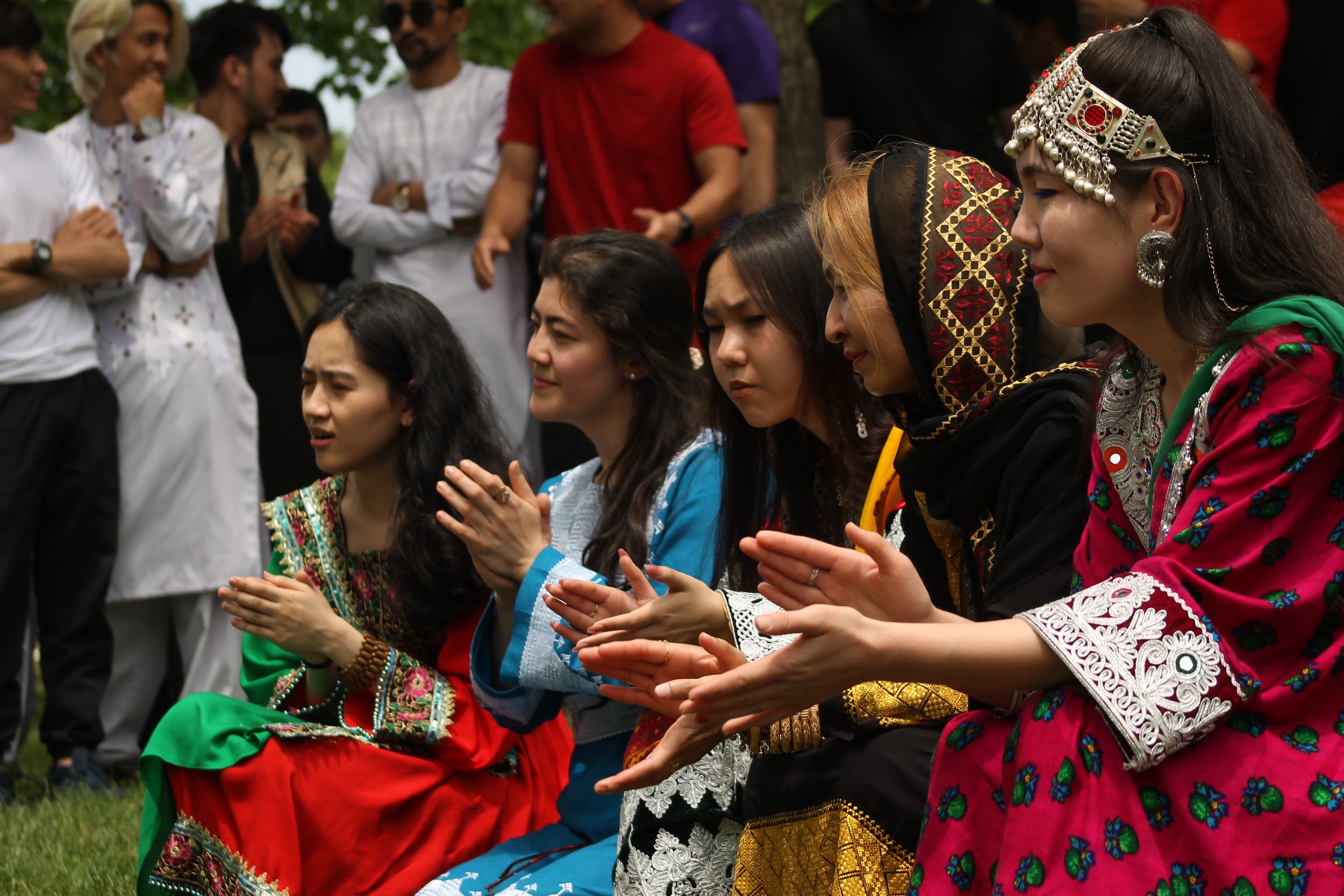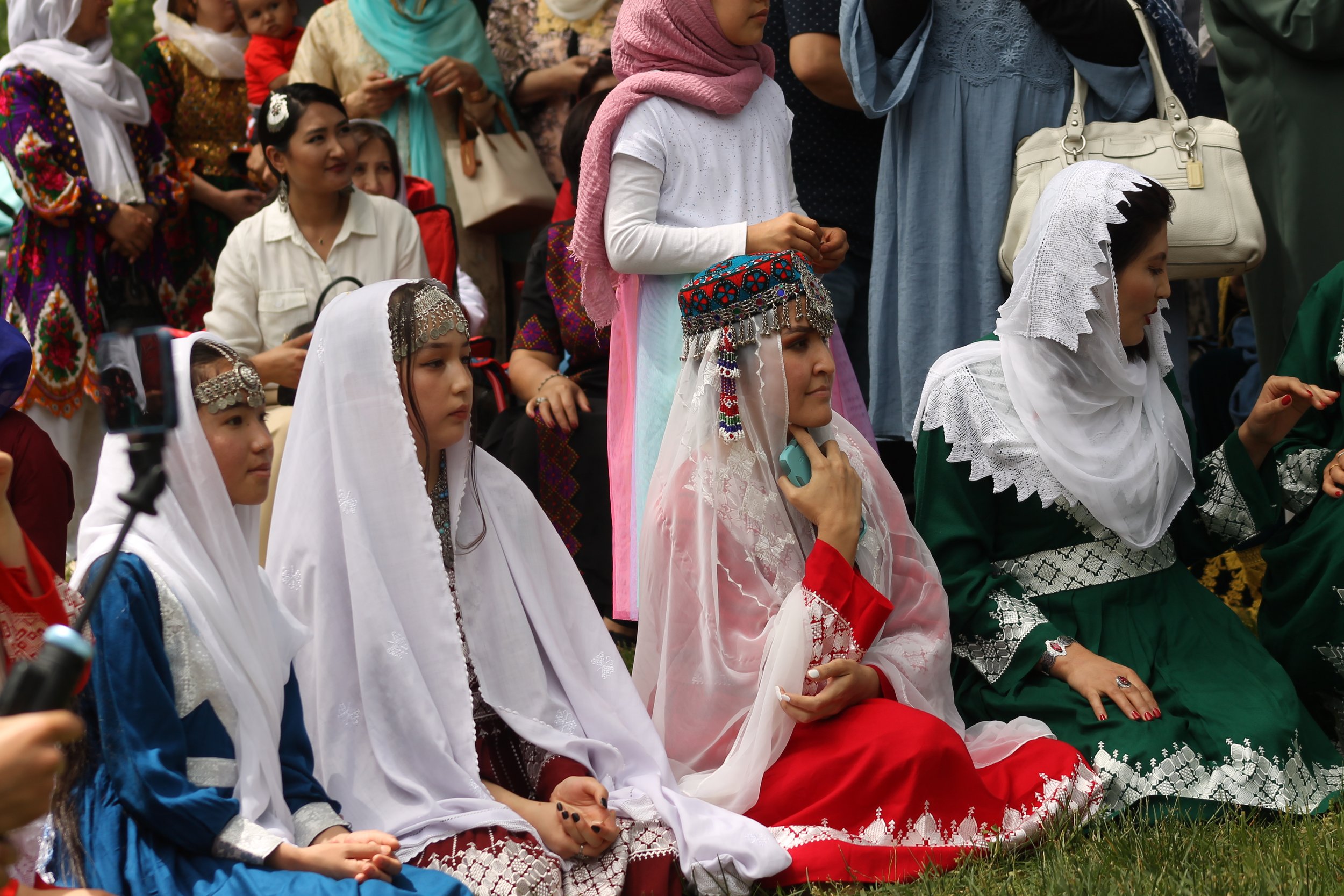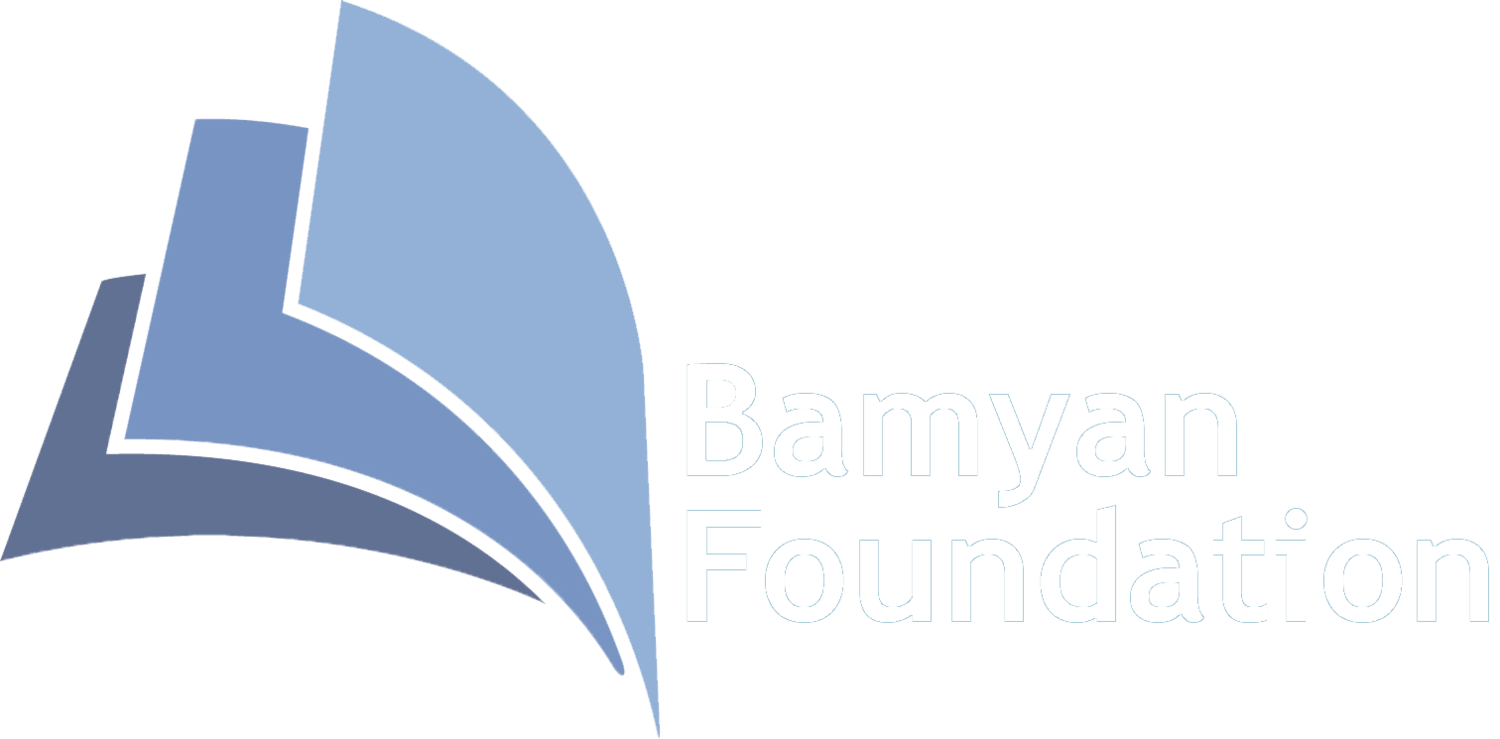The Hazara-American Association (HAA) organizes two major events per year: the first one at the end of Spring and the second one at the end of Fall, under the banner of, The Great Picnic/Gathering of Hazaras in the US. The Hazara diaspora and those who have arrived recently travel from distant states to attend these events in order to meet, network, share knowledge and experiences and make good memories with their fellow community members.
The first picnic this year, held on May 28, 2023, also coincided with the Hazara Culture Day to celebrate the rich Hazara culture and tradition in the presence of thousands of attendees, and to pass our traditions to the next generation.
The Bamyan Foundation Team collaborated with the HAA team to plan and organize this amazing event of celebration and festivity. Nearly four thousand people attended the event held in Black Hill Park, Maryland.
The event comprised the following aspects:
The Chaharda Pall custom:
According to our traditions, Hazara women performed the Chaharda Paal at the end of the month or full moon. They would take “faal” (fortune telling ), pray and send best wishes for safety of loved ones who had travelled afar. The custom is carried out under the supervision of a senior woman of status in the community. At the gathering, a team of 15 women performed the Chaharda Paal. The custom includes a mock bride covered with a shawl holding a bowl filled with other women’s rings. After the woman of higher status selects a Hazaragi poem among various options, and recites/sings it - the bride picks one of the rings and the woman then positively interprets the poem as a sign of good fortunes, health and happiness for the owner of the ring.
A narrator was explaining the custom to the attendees as it was happening. This was among the highlights of the picnic as the attendees enthusiastically applauded the Chaharda Pall team.
Hazaragi Dance:
Two Hazara women danced to the tunes of Dawood Sarkhosh, a famous Hazara artist and singer and composer, which was received warmly by the attendees.
Handmade products:
There were also handmade Hazaragi art work, traditional clothes, hats and shawls, kilims and carpets at display.
Food:
The event was potluck. Each attendee family brought a meal that highlighted the Hazara Cuisine and food common with other communities in Afghanistan. Among the highlights were Halwa, Liti, Qoroti, Sheer Birinj and more.
Networking and Meet & Greet:
This perhaps is one of the most important and practical aspects of our yearly gatherings. Folks who have been here for a long time get to meet the recent evacuees and those arriving via SIV programs. They share knowledge and experiences that is helpful for the new arrivals. The community has received the networking aspect of the event very well and requested for more sessions. The Hazaras of the DMV (DC-Virginia-Maryland) have generously hosted those who travelled to participate from other states. As a result, no one stayed in the Hotels which is a true testament the hospitality of the DMV Hazaras.
Volleyball Tournament:
Every year, a day prior to the Spring Hazara picnic, the annual community volleyball tournament is finalized. During the picnic, the winner team is announced and awarded. Some of the teams travel from other states to compete. This year, 10 teams participated in the tournament. Both the Bamyan and HAA teams recognizes the positive influence of sports among the youth and the role it plays towards their growth. Furthermore, our community leaders view sports as an effective avenue to help the youth meaningfully integrate in their new society while staying aware of their own backgrounds and traditions.
The atmosphere of the picnic/gathering was amazing – full of laughter and joy, where the participants were sharing their food and not to mention stories. The organizers prioritized featuring women and children during the event, as women took the lead in most aspects of the event. The community fully supports elevating and highlighting the meaningful presence of Hazara women, particularly in light of the trauma and stigma due to the intersectional factors of gender, race, patriarchy and religion that they have endured in Afghanistan. The elderly were connecting with one another and reminiscing, and several people found long lost friends, particularly after the chaos of the past two years. The younger generation were playing the musical instruments, mainly the dambora, and the kids were running around and being playful.
Most participants were wearing the traditional Hazaragi clothing in celebration of the Hazara Culture Day, the theme of the event. This gathering/picnic was a major success and is paving the way for unity of the various groups of Hazaras from different parts of Afghanistan, including the diaspora and the recent arrivals. This was the main goal of the event that both the HAA and Bamyan teams accomplished.
Special thanks goes to Asad Koraganie, one of our main community leaders and founder of the HAA, for his tireless efforts to initiate this tradition of joy and festivity that is celebrated every year for at least two decades.
